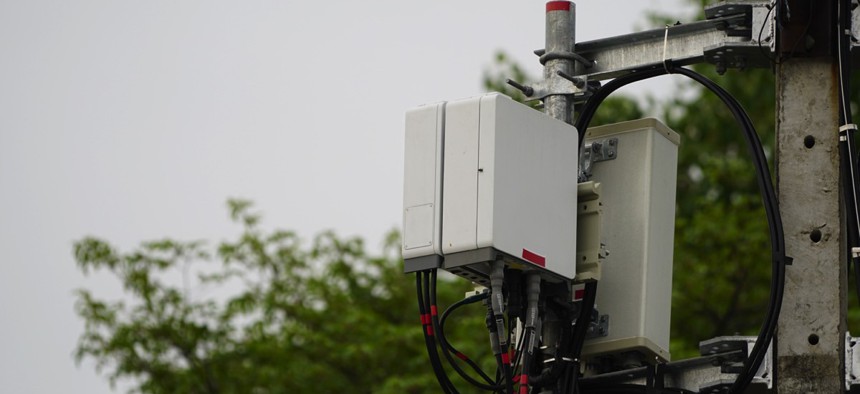Cities Release Their Own Broadband Model Code

While a federal committee struggles to reach consensus on a state broadband framework, the National League of Cities created its own, stressing local needs.
The National League of Cities has released a model code that municipal leaders can consult when deploying small cell wireless infrastructure, emphasizing local needs over federal and industry interests.
Small cells form the backbone of fifth-generation wireless, or 5G, broadband service that internet providers have promised to begin rolling out in 2018.
NLC’s model acknowledges “there is no single model code that will work for every jurisdiction” and attempts to balance providers’ desire to densify their networks with city efforts to maintain uncluttered streets and sidewalks ahead of 5G.
“We haven’t seen 5G deployment anywhere yet,” Angelina Panettieri, principal associate for technology and communications at NLC, told Route Fifty in an interview. “The small cell deployment that we’ve seen has really been focused on the downtowns of major cities and, to a lesser extent, the outlying suburbs.”
Most NLC members are small to midsize cities just starting to hear from providers, while larger cities that have gone through negotiations—like Sacramento and San José in California, Houston, and Indianapolis with Verizon—have yet to complete initial build-outs.
That’s why NLC issued a municipal action guide along with its code to introduce small cell technology and profile deployment approaches in a handful of cities: Boston; Lincoln, Nebraska; Raleigh, North Carolina; Tempe, Arizona; and San José.
“We’re seeing such a federal and state trend of preemption on this issue,” said Nicole DuPuis, urban innovation principal associate at NLC.
About 20 states have laws on the books preempting local authority over broadband, namely the cost of providers access public rights of way. And NLC is resisting efforts by the Federal Communications Commission and Congress to shorten deployment application timelines and reduce attachment fees cities charge providers.
Successful small cell deployments occur when cities proactively work with providers and between departments to articulate priorities, DuPuis said. More than one city negotiated industry replacement of city street lights, for instance.
“Bringing transparency to the process makes it easier for all parties involved,” Panettieri said. “The more you can establish up front, the tighter you can make the process.”
Carriers should know permit review expectations and fee structures, which should be discussed with residents ahead of time, she added.
Cities should also think through additional benefits they can negotiate with industry in exchange for access to rights of way—assuming state law allows, according to the guide.
San José negotiated setting aside funds with Verizon for extending broadband service to underserved neighborhoods with the least amount of infrastructure.
“They worked with providers to negotiate a fee structure that included a digital inclusion fund,” DuPuis said.
Dave Nyczepir is a News Editor at Government Executive’s Route Fifty and is based in Washington, D.C.
NEXT STORY: Modernization countdown: 5 reasons to move to cloud






